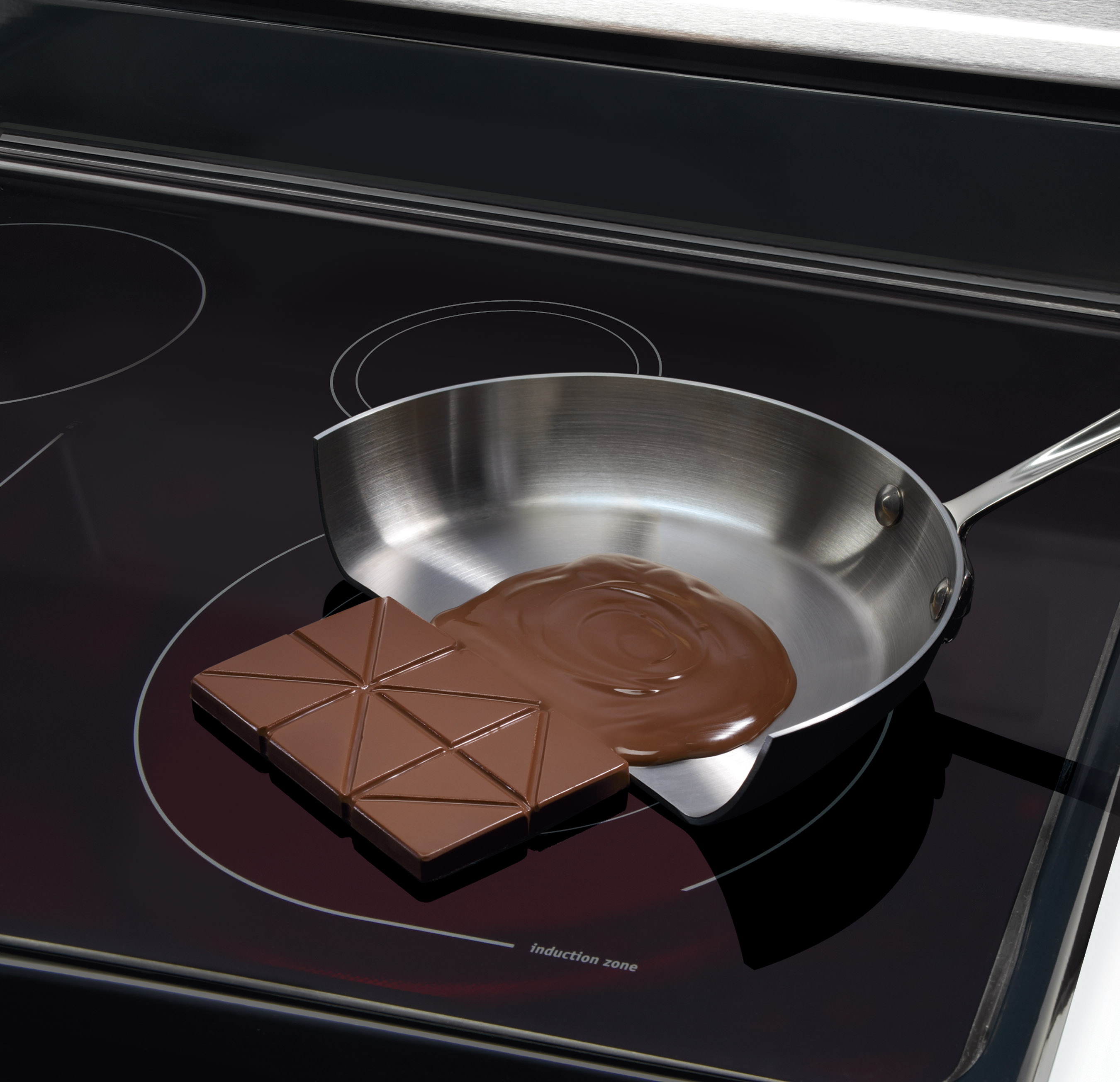Induction heating is the process of heating an electrically conducting object (usually a metal) by electromagnetic induction, where eddy currents are generated within the metal and resistance leads to Joule heating of the metal. Induction heating is a non-contact heating process. It uses high frequency electricity to heat materials that are electrically conductive. The process relies on induced electrical currents within the material to produce heat. A typical induction heating system consists of an RF power supply which sets alternating current within the coil, creating a magnetic field. The work-piece is placed in the coil where this field induces eddy currents in the work-piece, generating precise, clean, non-contact heat in the work-piece. The basic principles of induction heating have been understood and applied to manufacturing since the 1920s. Since then, the technology developed rapidly to meet urgent industrial and household requirements for a fast, reliable process of heating. More recently, the focus on lean manufacturing techniques and emphasis on improved quality control have led to a rediscovery of induction technology, along with the development of precisely controlled, all solid state induction power supplies. Since heat is transferred to the product via electromagnetic waves, the part never comes into direct contact with any flame, the coil itself does not get hot, and there is no product contamination. When properly set up, the process becomes very repeatable and controllable. It is also very efficient since the heat is actually generated inside the work-piece. This can be contrasted with other heating methods where heat is generated in a flame or heating element, which is then applied to the work-piece. For these reasons induction heating lends itself to some unique applications in industry. Induction heating is a method of providing fast, consistent heat for manufacturing applications which involve bonding or changing the properties of metals or other electrically-conductive materials. For many modern manufacturing processes, induction heating offers an attractive combination of speed, consistency and control.
In theory only three things are essential to implement induction heating:
a) source of high frequency electrical power,
b) work coil to generate the alternating magnetic field,
c) an electrically conductive work-piece to be heated,
It is within the induction coil that the varying magnetic field required for induction heating is developed through the flow of alternating current. So coil design is one of the most important aspects of the overall system. A well-designed coil provides the proper heating pattern for work- piece and maximizes the efficiency of the induction heating power supply, while still allowing easy insertion and removal of the part.

(Credit: ultrablitz.co.za)
Applications:
Induction heating can be used for any application where we want to heat an electrically conductive material in a clean, efficient and controlled manner. Induction heating allows the targeted heating of an applicable item for applications including surface hardening, melting, brazing and soldering and heating to fit. Induction heating has been used to heat liquid conductors (such as molten metals) and also gaseous conductors (such as gas plasma). Induction heating is often used to heat graphite crucibles (containing other materials) and is used extensively in the semiconductor industry for the heating of silicon and other semiconductors. Supply frequency (Mains, 50/60Hz) induction heating is used for many lower cost industrial applications as inverters are not required.
Induction cooking:
Induction cooking as one of the safest, most efficient and precise cooking methods is catching up with masses. In the last few years the technology has improved so much--and the costs have dropped so much--that a new wave of equipment, for both commercial and residential uses, has become available. Presently used induction cooking appliances are so overwhelmingly superior that they bids fair to almost completely capture the field for new installations worldwide in the next few years. Induction cooking employs an electromagnetic mechanism under the ceramic cooktop surface; when turned on, it generates an electromagnetic field that keeps the cooking surface cool while heating the cookware placed on it.
Benefits of induction cooking
· Provides rapid heating, improved thermal efficiency, and greater heat consistency, yet the same or greater degree of precise control as gas.
· In situations in which a hotplate would typically be dangerous or illegal, an induction plate is ideal, as it creates no heat itself.
· Induction cookers are safer to use than conventional stoves because there are no open flames and the "element" itself reaches only the temperature of the cooking vessel; only the pan generates heat.
· Induction cookers are easier to clean because the cooking surface is flat and smooth, even though it may have several zones of heating induction.
· In addition, food tends not to burn onto the cooking surface since it is nowhere near as hot as the pot and contents.
Drawbacks of induction cooking
· Foremost drawback is that cookware used on it must be made of ferrous materials.
· Induction cookers do not work at all with non-conducting (glass or ceramic) cookware
· While induction cookers work well with flat-bottomed pans, significantly curved-bottom pans, such as woks (despite companies selling "induction-compatible" ones), do not do well except on a correspondingly curved induction unit designed expressly for woks.
· Induction cookers are more expensive than other electric cook tops.
· Induction cookers require especially careful installation, because the electronics within an induction cooker need to void significant amounts of heat during operation.
· Units are usually equipped with fan-cooled heat sinks attached to the components requiring cooling, and proper flow channels and venting for that heated air are essential to the long-term "health" of the unit; thus, the dimensioning specified by the maker must be scrupulously observed.
· Also owing to heat-venting requirements, not all induction cook tops can safely be installed over all wall ovens.
· It is necessary to refer to the cook top maker's installation instructions to determine which combinations are considered acceptable, and many makers' instructions seek to steer buyers to using an oven of the same brand (even if others would function satisfactorily).
